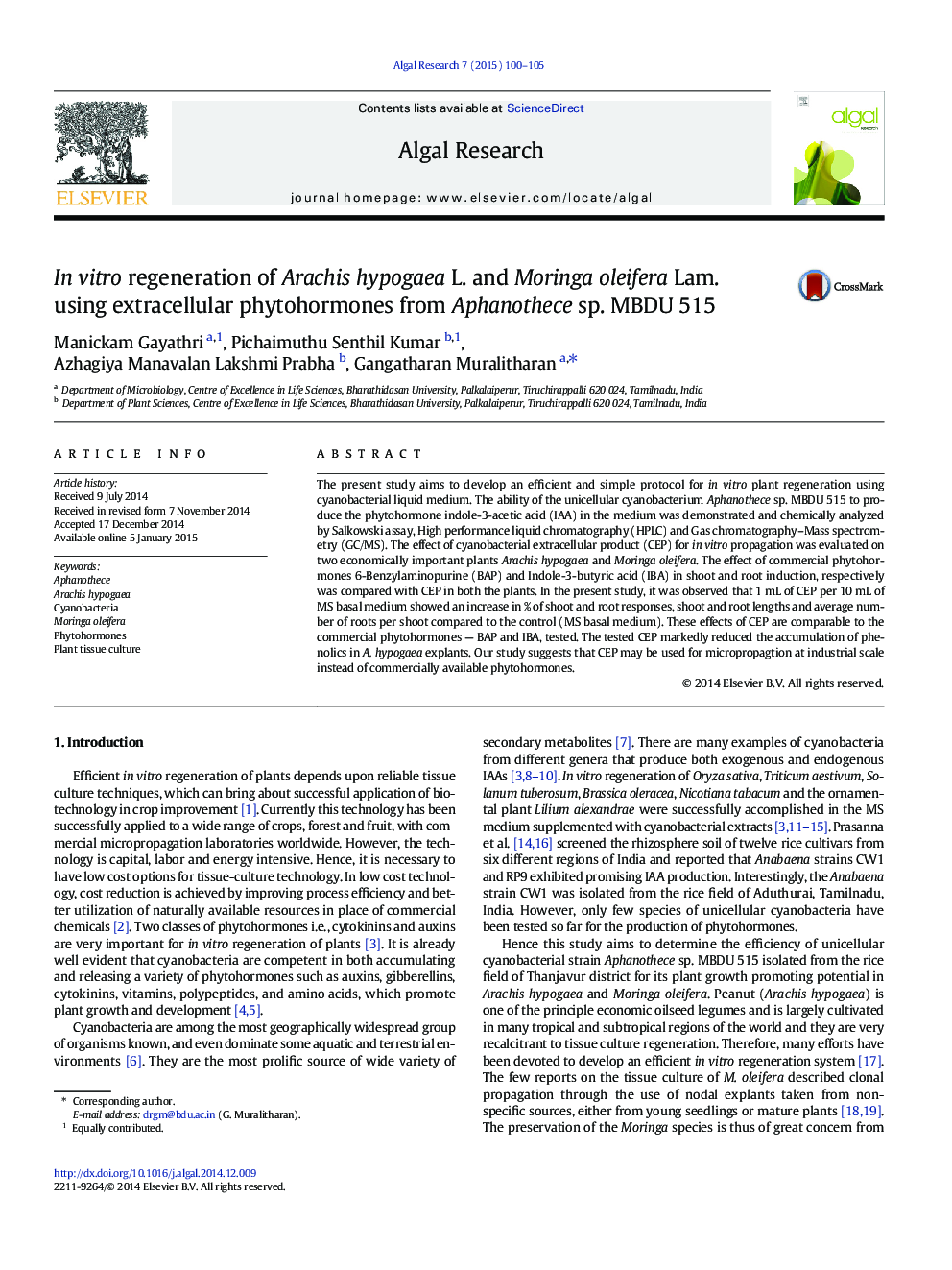| Article ID | Journal | Published Year | Pages | File Type |
|---|---|---|---|---|
| 1742048 | Algal Research | 2015 | 6 Pages |
•Cyanobacterial extracellular product (CEP) as a source of plant growth hormones•Micropropagation of plants using CEP replacing commercial supplements•In vitro propagation of Arachis hypogaea and Moringa oleifera with CEP•CEP reduces phenolic accumulation and browning of explants.
The present study aims to develop an efficient and simple protocol for in vitro plant regeneration using cyanobacterial liquid medium. The ability of the unicellular cyanobacterium Aphanothece sp. MBDU 515 to produce the phytohormone indole-3-acetic acid (IAA) in the medium was demonstrated and chemically analyzed by Salkowski assay, High performance liquid chromatography (HPLC) and Gas chromatography–Mass spectrometry (GC/MS). The effect of cyanobacterial extracellular product (CEP) for in vitro propagation was evaluated on two economically important plants Arachis hypogaea and Moringa oleifera. The effect of commercial phytohormones 6-Benzylaminopurine (BAP) and Indole-3-butyric acid (IBA) in shoot and root induction, respectively was compared with CEP in both the plants. In the present study, it was observed that 1 mL of CEP per 10 mL of MS basal medium showed an increase in % of shoot and root responses, shoot and root lengths and average number of roots per shoot compared to the control (MS basal medium). These effects of CEP are comparable to the commercial phytohormones — BAP and IBA, tested. The tested CEP markedly reduced the accumulation of phenolics in A. hypogaea explants. Our study suggests that CEP may be used for micropropagtion at industrial scale instead of commercially available phytohormones.
